Rachel Fuller – 24 October, 2012
My trouble is that I find the curator's framework somewhat superficial because of the fact that visiting artists and mulling over those interactions is what curators usually do, or should do. They travel, look at work and then think about it. And to present a group exhibition of works under the guise of artists who reflect, well, I would hazard a guess that most artists work in this way.
Sydney
Kate Mitchell (NSW), Todd McMillan (NSW), Justine Varga (NSW), Anastasia Klose (VIC), Dion Beasley (NT), Benjamin Forster (WA), Teho Ropeyarn (QLD)
Primavera 2012: Young Australian Artists
4 October - 2 December 2012
Curated by the MCA’s Anna Davis, Primavera 2012 takes the slow road. We are told that this year’s hot picks are a group of young artists looking closely at themselves and their immediate surroundings. I won’t lie, I have found this difficult to write about - mostly because I have struggled to find a through line other than the obvious central theme of inner reflection and reverie.
In her introductory essay Davis speaks of two journeys that have shaped the exhibition, the first being her physical adventure travelling across Australia meeting artists, and the second a more contemplative, mental trip - time spent in banal hotel rooms mulling over what she had seen. My trouble is that I find this framework somewhat superficial because of the fact that this is what curators usually do, or should do. They travel, look at work and then think about it. And to present a group exhibition of works under the guise of artists who reflect, well, I would hazard a guess that most artists work in this way. Thematic concerns aside, it is refreshing to view a show of artists where the tone is certainly less brash, more muted.
Three artists in particular presented bodies of work I found especially emotionally relevant.
I have followed Sydney artist Kate Mitchell’s work closely over the past five years and am intimately fond of her endurance performance video pieces, mostly acts that relate to comedy and slapstick, such as sawing the rungs off a ladder as she climbs higher, attempting to run on a spinning 44 gallon drum or scaling a wall using only plumber’s plungers.
Fall Stack (2012) - a five-channel video installation originally presented at her solo exhibition, ‘Magic Undone’ at Artspace earlier this year - is a seemingly whimsical work where Mitchell has created paper sets of the facades of stock stores: a bakery, an off licence, a chemist and so on. In her standard ‘work’ uniform of double denim, she proceeds to fall through each shop awning, the screens aligned vertically to produce the illusion of her caught in a loop of descent.
Fall Stack feels darker than her previous work. In a conversation with Kate earlier in the year she told me of a residency she had recently undertaken in Yokohama, where she had observed suicide nets in the local shopping mall, death prevention canopies for plummeting jumpers. With this sombre mood in mind I see the work inextricably linked to the ubiquitous 9/11 photograph of a falling man.
The obvious act of falling is not the only tie, for Mitchell is also consumed by the concept and value of work in her art. As such I see the stack of Fall Stack as an easy stand-in for the high-rise office block, the location where many labour away their 9 to 5 lives. Fall Stack not only builds upon Mitchell’s body of work concerning humour and physical challenge (in a bid to escape the doldrums of the everyday) but also ominously ponders the price one is willing to pay for such a life.
Melbourne artist Anastasia Klose also presents ideas relating to work - or a lack of - in her performance installation, The Re-living Room (2012). Harking back to two months of her life spent unemployed in 2003, Klose has recreated a hermetically sealed, kitsch living space within which she lives and performs throughout the hours of the exhibition. Glued to pop music videos as she was in 2003, Klose is learning the dance moves to sickly sweet inspirational songs and staging the steps for the audience.
I am not especially fond of any perpetuation of the artist as a mythological, otherworldly creature. My irritation is further cemented by my hearing many audience members muttering ‘Amazing!’, when perplexed by the sight of the artist allegedly doing nothing in a museum. The perspex viewing window, shaped like a gash, prompts the thought that, at any moment, she might leap out, transformed by her period of unemployment. 2003 was when she decided to commit to being an artist.
On the day I visited, Klose was not dancing but rather staring at the screen, deliberately nodding her head to the beat - an action I initially found contrived. As time passed however her awkward self-awareness became appealing, a mirror to the question every artist faces when confronted by, ‘So what exactly do you do all day?’ Time spent thinking is a luxury not easily understood within our capital value system, and as such sometimes the only answer is to construct a reply in relation to the framework informing the query. Basically, lie.
Away from the arena of work, Dion Beasley’s art practice stems from his life growing up in communities around Alice Springs and Tennant Creek in the Northern Territory. Beasley produces etchings, screen prints and paper dioramas of camp dogs in varying states - fighting, barking, with pups, meeting horses, traveling in paddy wagons. Beasley’s canines are whimsical and naïve in style yet ultimately closely observed. The artist does not illustrate them individually but as part of a pack, revealing larger questions of how we ourselves operate within groups, and understand territory.
Interestingly, he presents three works which feature exotic animals with his dogs. For example, Lion Chase (2011) sees a lion chasing a zebra and leopard. Here the dogs act as back-up, encircling the victims, teeth bared and snarling. It is not a static work, for each animal ejects speed lines, racing across and around the austere canvas.
Regrettably, the work’s label explains the inclusion of the exotic animals as ‘inspired by those he [Beasley] has seen in books and on television.’ In the catalogue essay however the inclusion of foreign wildlife is justified differently, apparently motivated by ‘visits to different zoos, and the artists’ favourite DVDs’ (1.). Whatever the case, such statements only serve to assert Beasley as outsider (Aboriginal, deaf, non-art educated). It disappoints me to think that anyone would see these explanations as relevant, especially considering the above points would be true for most artists who haven’t visited Africa, myself included. It washes over the work, diluting Beasley’s observations when in essence he understands much more about the nature of categorisation than any institution.
Rachel Fuller
(1.) Heathcote, Ktima, ‘Dion Beasley’ in Primavera 2012, Sydney: Musuem of Contemporary Art Australia, 2012, p17
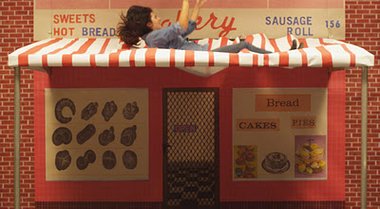

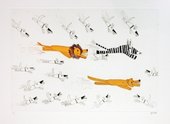
 Two Rooms presents a program of residencies and projects
Two Rooms presents a program of residencies and projects Advertising in this column
Advertising in this column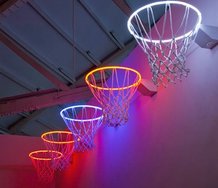
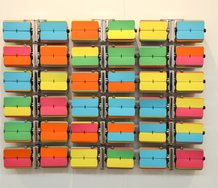
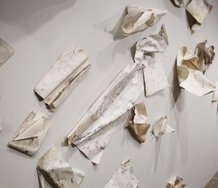
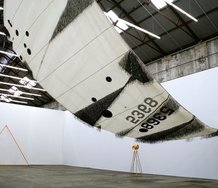
This Discussion has 0 comments.
Comment
Participate
Register to Participate.
Sign in
Sign in to an existing account.